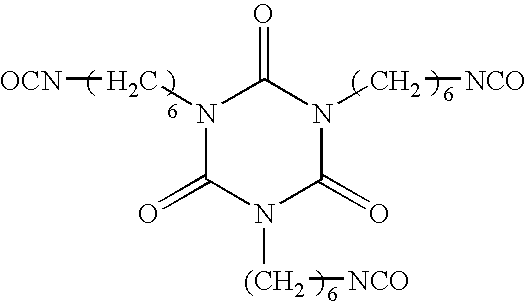Permanent resist, permanent resist-laminated substrate and process for producing the same
a technology of permanent resist and laminated substrate, which is applied in the direction of photosensitive materials, instruments, photomechanical equipment, etc., can solve the problems of insufficient moisture-resistant insulating properties, electrical signal malfunctions, and reduced moisture-resistant insulating properties of humid conduction
- Summary
- Abstract
- Description
- Claims
- Application Information
AI Technical Summary
Benefits of technology
Problems solved by technology
Method used
Image
Examples
example 1
[0066] The sample was allowed to stand at room temperature for 10 minutes after exposure, the polyethylene terephthalate was removed, and a developing solution at 30.degree. C., comprising calcium chloride mixed and dissolved in a 1 wt % washing soda solution in an amount for a Ca ion content of 10 ppm, was used for 45 seconds of spray development of the unexposed sections of the photosensitive resin composition layer. After the spray development, a rinsing solution at 30.degree. C., comprising calcium chloride mixed and dissolved in purified water in an amount for a Ca ion content of 90 ppm, was used for 150 seconds of spray rinsing of the exposed resist sections. Next, an ultraviolet exposure apparatus by Oak Manufacturing Co., Ltd. was used for ultraviolet exposure at 1 J / cm.sup.2 and heat treatment was conducted at 160.degree. C. for 60 minutes, to obtain an FPC sample bearing a patterned permanent resist. The alkaline earth metal carboxylate content was >30 mole percent based o...
examples 2-7
[0067] An FPC sample bearing a patterned permanent resist was obtained in the same manner as Example 1, except that the developing solutions and rinsing water shown in Table 2 were used as the developing solution and rinsing water of Example 1. The alkaline earth metal carboxylate contents were all >30 mole percent based on the total of the carboxyl and a metal carboxylate group in the permanent resist.
PUM
| Property | Measurement | Unit |
|---|---|---|
| temperature | aaaaa | aaaaa |
| pressure | aaaaa | aaaaa |
| temperature | aaaaa | aaaaa |
Abstract
Description
Claims
Application Information
 Login to View More
Login to View More - Generate Ideas
- Intellectual Property
- Life Sciences
- Materials
- Tech Scout
- Unparalleled Data Quality
- Higher Quality Content
- 60% Fewer Hallucinations
Browse by: Latest US Patents, China's latest patents, Technical Efficacy Thesaurus, Application Domain, Technology Topic, Popular Technical Reports.
© 2025 PatSnap. All rights reserved.Legal|Privacy policy|Modern Slavery Act Transparency Statement|Sitemap|About US| Contact US: help@patsnap.com


